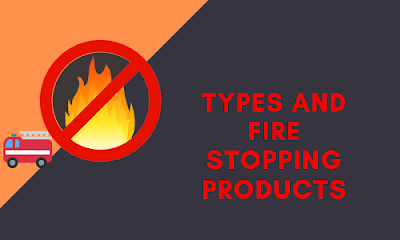Fire Stop Barrier Systems: Safeguarding Building Integrity in Case of Fire
Types of Fire Stop Barrier Systems:
There are various types of firestop barrier systems available, each designed for specific applications and building elements. Here are some common types:
- Intumescent Sealants and Putties: These materials expand upon exposure to heat, forming a char that seals gaps and prevents the passage of fire.
- Mortar and Packing Blocks: These are used to fireproof larger openings and around irregular-shaped penetrations.
- Collars and Wraps: These are flexible materials used to fireproof cables, pipes, and ducts.
- Foam Systems: These spray-on foams expand to fill gaps and provide fire protection.
- Enhanced Fire Safety: Firestop systems provide a vital layer of protection by preventing the spread of fire and smoke, ultimately saving lives and minimizing property damage.
- Compliance with Building Codes: Most building codes require the use of firestop systems in specific locations within buildings to ensure occupant safety.
- Improved Building Performance: Firestop systems can contribute to a building's overall fire resistance rating, enhancing its structural integrity and reducing the risk of collapse in case of a fire.
- Reduced Insurance Premiums: Some insurance companies may offer lower premiums for buildings with properly installed firestop systems.
Choosing the Right Fire Stop Barrier System:
The selection of the most suitable firestop system depends on several factors, including the type of building, the location of the openings, the size and shape of the penetrations, and the fire resistance rating required. Consulting with a qualified fire protection professional is crucial to ensure the appropriate system is chosen and installed correctly.
Safety Considerations:
- Firestop systems should be inspected and maintained regularly to ensure they remain effective and meet the necessary fire safety standards.
- Only use firestop products that are fire-tested and approved for the intended application.
- Follow the manufacturer's instructions carefully during installation to ensure the system performs as intended.
Investing in firestop barrier systems is a vital step towards creating safer and more fire-resistant buildings. These systems play a critical role in protecting lives and property, making them an essential component of responsible construction practices.

Comments
Post a Comment